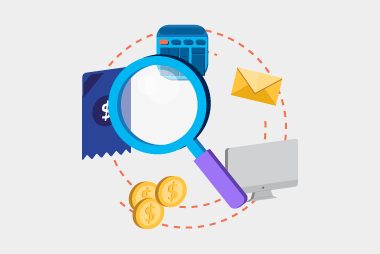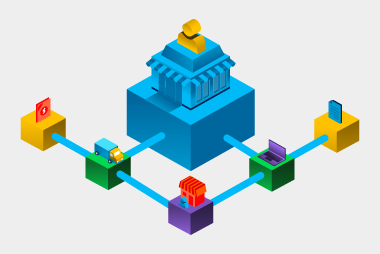Myth 1: eInvoicing is just sending PDFs via email
One of the biggest misconceptions is that eInvoicing simply means emailing a PDF invoice. But it’s not. eInvoicing refers to the direct exchange of structured invoice data between accounting systems via the secure Peppol network, without the need for manual data entry. Unlike PDFs, true eInvoices are machine-readable, automatically processed and help reduce errors. This ensures greater accuracy, faster processing and a smoother experience for businesses.Myth 2: eInvoicing is only for large enterprises
Many small businesses assume that eInvoicing is only for corporations with complex financial systems. eInvoicing is designed to benefit businesses of all sizes, especially SMEs that struggle with late payments and administrative costs. Governments in Australia and New Zealand are actively encouraging small business adoption, with incentives and resources available to make the transition easier. Including faster payment times helping improve cash flow. We provide our web portal, Colladium, for small businesses to send and receive eInvoices for free!Myth 3: eInvoicing is expensive and hard to implement
Some businesses fear that switching to eInvoicing requires a costly software overhaul. The truth is, most accounting platforms like Xero, MYOB and QuickBooksalready support eInvoicing, often at little or no extra cost. While there may be an initial learning curve, the long-term savings from reduced admin, fewer errors and faster payments outweigh the effort of implementation.Myth 4: My customer isn’t using the same software as me, so I can’t send eInvoices to them
eInvoicing works with any software, so anyone can use it. It operates through the Peppol network, which uses Access Points, like MessageXchange, to send and receive eInvoices. Think of it like a mobile network – just as Telstra, Optus and Vodafone connect calls regardless of the phone you use, Access Points enable eInvoicing, no matter what software you have.Myth 5: eInvoicing is not secure
With increasing cyber threats, security concerns around eInvoicing are understandable. However, eInvoicing is actually more secure than traditional invoicing methods.- Peppol eInvoicing operates on an encrypted network, reducing the risk of invoice fraud and email phishing scams.
- Unlike emailed PDFs, which can be intercepted and altered, eInvoices go directly from one accounting system to another, eliminating tampering risks.
Challenge 1: Lack of awareness and understanding
A major hurdle to adoption is that many businesses simply don’t know what eInvoicing is or why it matters. Without clear guidance, it can seem like an unnecessary change. Governments and industry bodies are ramping up education efforts. Businesses can also consult their accounting software providers to see how easy it is to enable eInvoicing. Even if one business adopts eInvoicing, it only delivers full benefits when trading partners also come on board. Businesses can encourage suppliers and customers to make the switch by highlighting efficiency gains and compliance benefits. Governments are also offering incentives to drive adoption.Challenge 2: Resistance to change
Many businesses are reluctant to move away from familiar processes, especially if their current invoicing system “works just fine”. The transition to eInvoicing doesn’t have to happen overnight. Businesses can start by enabling eInvoicing within their existing software and adopting it gradually. The benefits –faster payments, fewer errors, and reduced admin – will quickly prove its worth.Want to get more information on eInvoicing for your organisation? Get in touch with our experts below.Request a call
Chat with one of our experts
Just fill out your details below and we'll be in touch within one business day.

